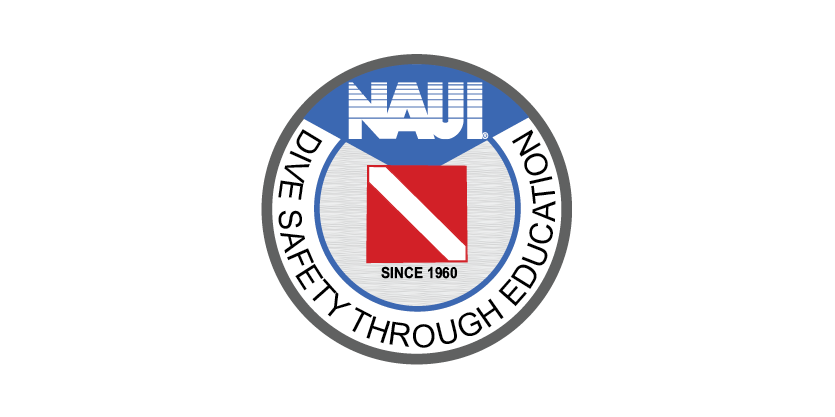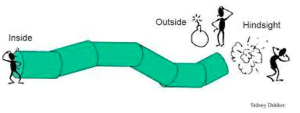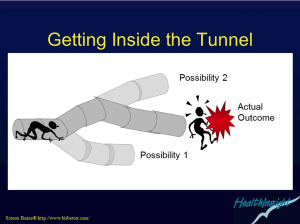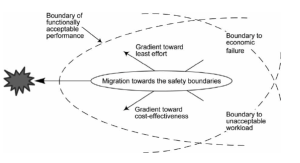Moving into Chapter 4 of Forever Improving the Diver, we visit Dekker’s Hindsight Bias current look at safety from the safety community installment two – As a reminder Bruce starts the article acknowledging he is no safety expert but relies on subject matter experts for guidance.
“I’m no safety expert so I look to safety experts to find concepts that I can apply to my diving. Not that I feel unsafe but to enhance myself with what the experts are advancing.”
For this discussion I want to share what I’ve learned from one author – Sidney Dekker (references at the end). Dekker has a series of books on safety which span a range of industries which include concepts that apply to diving with just a little thought.
The world of diving is no different from other industries which have mishaps. The focus on accident investigation has been historically looking at a root cause so a repair can be made and hooray the problem solved forever.
This mind set comes from when the problem is something mechanical which has failed, and a mechanical / specification change can be made, and the problem is resolved. That is not the case with some technical – social dynamic situation where it was not hardware that caused the issue to occur the social side is linked in as well. Sidney Dekker suggests we avoid the hindsight bias by using a view based on what was occurring in the eyes of the participants. In a God like view of a mishap looking back we might be able to guess that the victim only had one glass of orange juice for breakfast and that was the root cause for the accident. But in reality, from the victim’s eyes looking forward as they were traveling in time, they can only track a limited number of conditions / factors / indicators and make decisions from what they see forward from that point in time.
Every time I have to hit the brakes in my truck because of something I see in front of me does not make me think that = Gee whiz – if only I had left 5 minutes earlier, I could have avoided this mess. That is viewing the mishap the wrong way around. If I had known I was going to run out of gas on the dive I would have used twins. The thing is I thought I had enough gas or I would not have started the dive with the gas I took. I really don’t have a death wish. I did from my looking / planning frame of reference – from my frame of mind made choices that I thought were the best or at least adequate.
I follow Dekker’s belief that knowing the outcome we can always come up with a solution but when I enter the water, I don’t know the outcome and have to make lots of decisions along the way. These decisions were based on what I can observe and analyze kick by kick during my adventure.
Real safety comes from widening our view looking forward not looking back. In diving let’s select a common one = which has been worn raw over the years – running out of gas. This situation in hindsight has been around since the J-valve. The problem starts with plenty of gas and then the pendulum swings when it is not enough. The problem is not the gas supply, but it is tracking the gas supply compared to the diver’s current situation. Divers attempt to monitor their gas supply, but this monitoring is not consistent. There are many distractions to monitoring just about everything a diver is to monitor gas, depth, time, deco status, location of buddy, buoyancy, squeezes, equipment location, just to get started on the list. Since we have to have some frequency for each of these monitoring tasks, we need some method, so no monitoring results end in a surprise.
Let me pick a second decision I see as not optimal. I see in countless briefing the focus on the turn pressure as ½ the pressure in the cylinder. Well, that is easy to describe but is that when you really want to turn around? I’m sorry, for me the turnaround is not based on gas pressure but at the point when I don’t think I can rescue my buddy any longer. That has nothing to do with gas but the entire dive situation. I may be getting cold, I may be getting too far offshore or away from the boat, I may be getting too deep for the regulator I’m using to share air well enough. Maybe the current has now kicked up during the dive. The reality is that by turning around based on this decision is a far safer one than dividing my gas pressure by 2. Sorry my tone is not the lazy choice used by so many in their briefing but the goal for diving should not be how can I come back with the least gas but how to keep evaluating my limits / my buddy’s limits during the whole dive. We both want to return safely. How this can work is years ago my buddy and I were shore diving, and we planned a second dive we were both tired from the first so as we snorkeled out for dive two, we just made a big U and returned to the beach. We did not say anything but as we got farther from shore, we both realized how tired we were so the dive was over before we even submerged. On shore we just looked at each other and said best choice ever. This decision had nothing to do with some cylinder pressure.
Sidney’s description of diving tasks is that we are all inside a tunnel and with all our skills we can see the walls of the tunnel. As the time advances and we progress in the tunnel we see forward to the limits of our knowledge and skills. We make choices and when we make choices we never know if they are choices toward success or failure as they are our best choices. A God looking down says no-no see they made the wrong choice and what is wrong with them. But the participants are following their training / skill / routine which this time lead to a different outcome. Since the participant will never by God since God works in hindsight not in the tunnel next to the divers as the participant that view of the outcome is really of little value. The better choice is to improve the skills and assessment ability of the participants to have a larger diameter tunnel so that choices made on the journey are better but in no case will they be fool proof – just better since time marches on as we move thought the tunnel.
As we continue the journey forward of “Forever Improving the Diver” I would encourage each of you to provide your tip to afiore@naui.org or marketing@naui.org. Thank you Bruce Higgins for your input and I look forward to seeing each of you out on the water.
I look forward to seeing you all out on the water.
Angelo Fiore,
NAUI VP Sales & Marketing
Let’s Keep Grinding Forward
References
Sidney Dekker
Drift into Failure: From Hunting Broken Components to Understanding Complex Systems
Publisher : CRC Press; 1st edition (February 28, 2011) ISBN-13 : 978-1409422211





